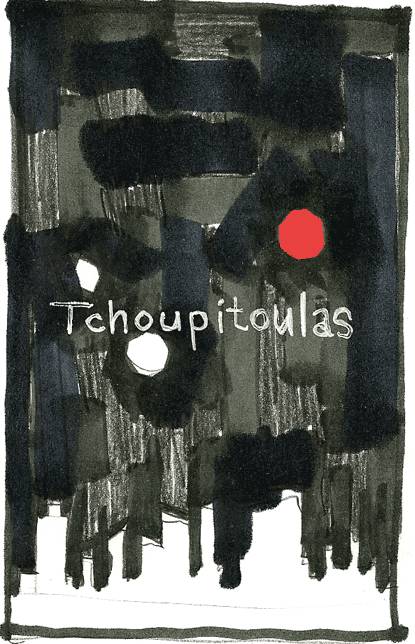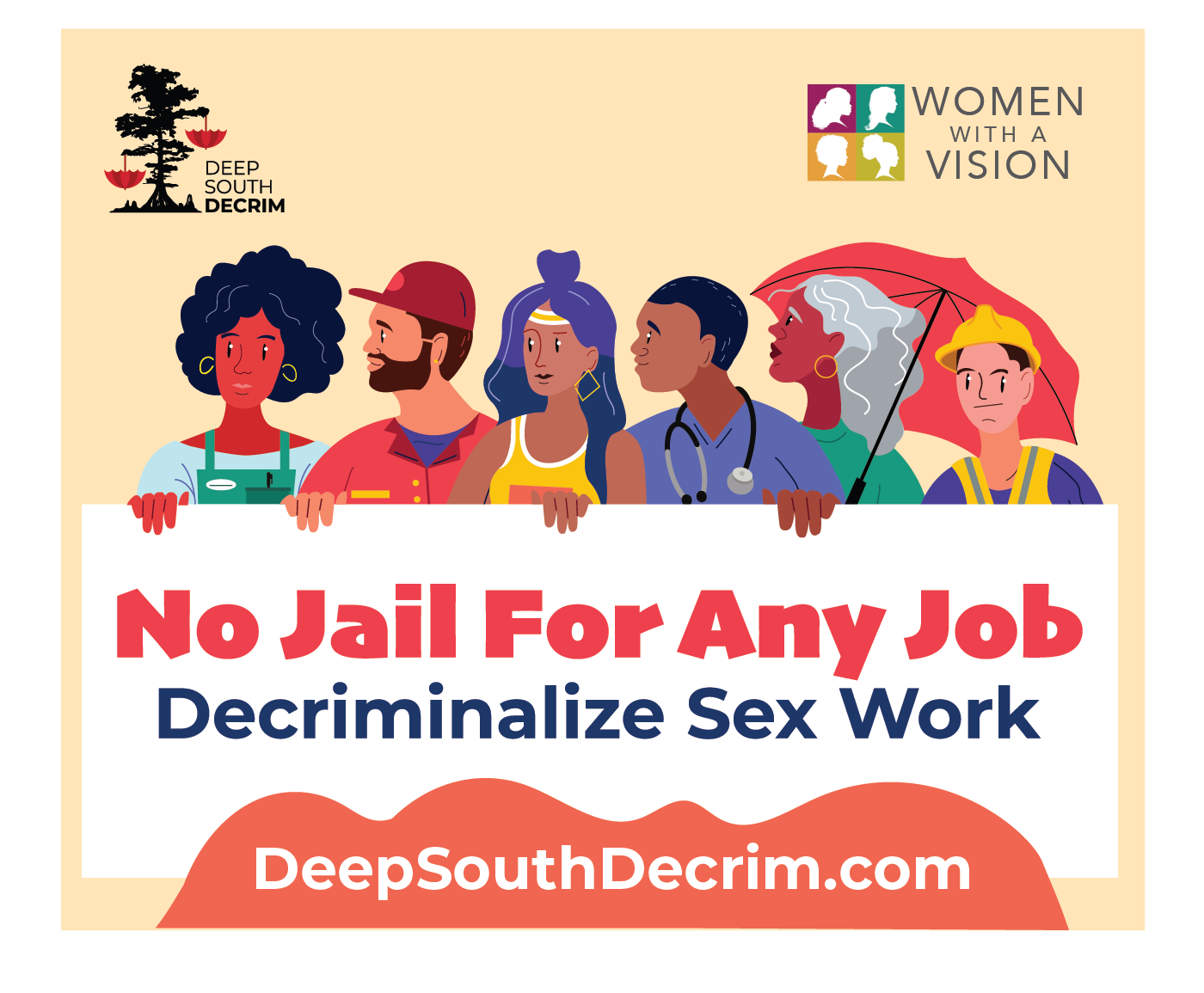Any lover of both New Orleans and film knows the difficulty moviemakers have had in capturing the essence of the city. For every success like Down By Law there’s The Big Easy. For every Hard Times, Live and Let Die.
Add the new film Tchoupitoulas to the list of successes. The hazy masterpiece loosely tells a story of three young brothers—focused on the youngest, William—who take the ferry from the West Bank to the French Quarter and experience a night of music, Quarter characters and debauchery. With nary a narrative structure, the movie captures the wonder so many have felt upon first exploring the city, evoking the lust and love that permeates the air.
Tchoupitoulas was made by two brothers, Bill and Turner Ross. The pair grew up making frequent lengthy stays in New Orleans. After their debut film, 45365, won festival awards and was praised by the likes of Roger Ebert, the two set out to pay homage to New Orleans and the French Quarter, whose images, imprinted on their memories in childhood, had remained vivid. To ensure that audiences would have a chance to see these images in the film, though, the brothers needed money to obtain clearances for music they wanted to use—an essential ingredient in setting its mood. They launched a Kickstarter campaign, asking for $38,000. They not only met the ambitious goal, but blew past it, finishing with $56,016.
Non-profit film production company Cinereach described Tchoupitoulas best, calling it a documentary in the sense of the “documenting of an experience—a distinct time and a place and the people that inhabit it. No interviews, no voiceover; just the evocation of an existence and the feelings it conjures”. Now locals have a chance to see this documentary on Tuesday, May 1, when the Jazz and Heritage Foundation’s Sync Up Conference hosts the New Orleans premiere of Tchoupitoulas at 7 p.m. in the New Orleans Museum of Art’s Stern Auditorium.
OffBeat spoke with Bill Ross, the Tchoupitoulas co-director, about making the film, as well as Michael Gottwald, one of the film’s producers and planners of their Kickstarter campaign, who talked about what he learned from the project’s success.
Gottwald also co-produced Beasts of the Southern Wild, the Louisiana-made film that was the winner of this year’s Sundance Film Festival Grand Jury Prize. Excerpts from Beasts—the first shown in New Orleans—screen before Tchoupitoulas at 6:30 p.m., also in the Stern Auditorium.
Tchoupitoulas is still looking for extra donations to help them spread the movie as far as possible. If you’d like to help, visit this site to make a donation.
[vimeo]http://vimeo.com/6274274[/vimeo]
Tell me about the relationship you and your brother had with New Orleans before making the film.
My dad went to University of Southern Mississippi in Hattiesburg over the summers—he was a teacher in Ohio—so in the summers we would go down there and on the weekends we would come into New Orleans. From a very young age we started coming down here, and then my dad moved here later. We’ve always been in and out of here. Growing up, we’d sneak out of wherever my dad was staying and essentially do what the kids in the film were doing. My brother lived here for a while.
When did you move here?
A year ago. We shot the movie here, lived here for a year shooting that, moved to Texas, shot a movie there, and then after that we moved back here.
So how did you start working on the movie?
Being in and out of here, this place has always haunted me, I guess, from an early age. You get those images in your head…That’s all we do really—exorcise those images that we’ve seen our whole life and try to get them on film. It was a place that meant something to me, so we came down here.
Did you already have a thematic concept before you started shooting?
We went into it knowing that we wanted, hopefully, to find kids that were doing that. We wanted to speak to our experience and see the city as kids, and, luckily, we found those kids.
How did you find them?
We live on the West Bank and they walked right past us. When we saw them, I said, “Those are the kids.” I just walked over to them and asked them if they wanted to be in [our film], and they said yes. It was either that day or a couple of days later that they called us up and said, “Hey we’re gonna go over to the Quarter, do you wanna come?” and we said, “…Yeah.”
What was special about those kids that made you pick them?
Just their banter…and the little guy [William] was just too good. Like in the movie, he was saying all of this ridiculous stuff. Like, “Do you think you could survive a lion attack? I know I could…” That’s just the way he talks. He’ll just tell you that stuff.
You could tell his brothers couldn’t wait for him to shut up.
That’s the way they were. When we first asked them to be in the movie they said, “Yeah, we’ll be in it, but William can’t be because he’s annoying.” That lasted about ten minutes. He has to be in this thing. He could not be denied.
Do you still spend any time with William?
I try to take him out once a week to see a movie, talk about life, stuff like that. He’s a Freshman at L.B. Landry now. He’s doing well in school. He and I have this deal where if he gets straight As we’ll go play laser tag. He gets close pretty much every time, but he’s never gotten all As.
Did you have a favorite scene or shot that made it into the movie?
There was so much that we shoot that I love that got cut out…
What was a favorite scene that got cut?
There was some really seedy shit that I probably shouldn’t say….we got into some really weird stuff. For a whole year we were up filming from dusk ‘til dawn, and through a year of that in New Orleans…we got into some pretty interesting shit.
[For a favorite] I’d probably have to say that last moment there with William when they’ve gotten back to the West Bank and he’s just sitting there alone looking back at the city…my brother shot that.
What was that ship the kids were exploring in later in the film?
That was the Mississippi Queen, which was parked on…that was like a separate adventure. That was one night where [the kids] said, “We’re thinking about sneaking onto this ship…” So we went on with them, and then after that discovery we would go back all the time, go top deck and drink beer. That place was amazing because those lights were on all the time. Then it got dismantled. It was great—you’d sit in that ballroom at the bar, and there was no one around. No security, not even any bums. It was a great place to throw parties. You had to be a little sneaky about it, but I’ve since heard stories about other people having parties there.
Do you and your brother split up the filmmaking duties?
Yeah, we both shoot. I do the editing, and he does all the producing and business stuff.
Talk about the equipment.
We shot on two Panasonic DVX 100-Bs, which are like prehistoric cameras at this point, because they’re standard definition. But it’s all we can afford. And we just shot our last movie on them too.
I especially liked the color in the movie.
We had a really good colorist who did a lot of work at the end of post-production. We were definitely paying attention to it, because that was something as a kid that always struck me growing up in pretty bland small-town Ohio, and then coming to New Orleans with this explosion of color—that always struck me.
What was the hardest part about capturing the feeling of New Orleans?
That’s a hard question…the kids really made it pretty easy on us, because they were the tour guides, so it was sort of like our hands were forced because of what they were doing. So they helped out in that a lot, but it was something that we were conscious of. With all of our movies we try to build a sense of place, and feel and tone. And a lot of that is manufactured in the edit, because we shoot and shoot—there are hundreds of hours [of footage]. We take this little piece here, and this little piece, and hopefully all those pieces will amount to something.
[vimeo]http://vimeo.com/9332222[/vimeo]
Did you have investors back the film, or did you go out of pocket to pay for everything?
Ross: We funded most of this. We have a friend, Kyle, who’s nickname is the muscle. He hangs out while we’re shooting, and he would go to Harrah’s, which helped out a lot…being serious! He played poker—he’s really good. We tried to stop him from doing it, because gambling is not a financially sustainable fundraising method, but he would say he was gonna go to the grocery store, and he would sneak over there and come back with $400, $500. Not every time, but a lot.
Gottwald: But then you guys also amassed a huge amount of debt.
Ross: Yeah, we also won a big award that had a lot of money, $20,000, which wiped out the debt. We were able to pay off our credit cards. We had bought the cameras years ago, and I had a job then. We paid for tape stock. But the costs were really just paying for living. When it came into the editing, that’s when costs surmounted again.
Which brings us to the Kickstarter campaign. Is this the most the most successful New Orleans project yet on Kickstarter?
Gottwald: The number one thing that has made this thing as successful as it is, is that Kickstarter got behind it themselves. That’s the good fortune of having met Elisabeth [Holm, Director of Kickstarter’s Film Program] and Yancey [Strickler, Kickstarter co-founder]. Elizabeth’s the film point person at Kickstarter. I’d met Yancey before through friends, because I worked on the Obama campaign and we met the guys from Kickstarter. I first met Elisabeth at Sundance, but then she was also at True/False [Film Festival] in Missouri—where we had a sneak preview of the film—which we can’t say enough good things about. Best film festival in the world.
Ross: They flew up Why Are We Building Such A Big Ship? to play before every screening of Tchoupitoulas. Which is awesome.
Gottwald: We launched the Kickstarter campaign at True/False. I launched it about half an hour before we had our very first screening. Elisabeth was there—we were able to talk about everything and she was able to give advice. I think that’s another thing that has helped us too: the fact that the project is a completed project and we’re in a position to be able to show it at places where a lot of people see it. That’s a stroke of luck, because if you’re trying to get people pumped about a project that’s still in the works, or you’re developing a movie, it’s hard to show people that this is something worth seeing.
This had the power of a handful of people having already seen it and saying, “This is something worth supporting,” and also a whole other group of people saying, “I want to be able to see this movie, and in order to see this movie I need to give to this campaign.” That’s not a rule, but what we were actually raising money for is something very specific that will actually enable the film to be available. And we have a history with our last film, 45365, where the availability on it is weird. It hasn’t been available easily because it’s tied up with music rights issues, so that was a problem that we needed to solve this time around and that’s why me and Dan [Janvey, co-producer] and Josh [Penn, co-producer] wanted to make sure this film was able to get out into the world in a way that 45365 wasn’t.
I did a lot of work looking at Kickstarter campaigns, looking at what makes them successful and what to expect, thinking about the incentives and things like that.
What were some principles you learned?
Gottwald: You have to anticipate that there’s going be a dead period—that you’re going to get a lot of donations at the beginning and at the end but not a lot in the middle.
Ross: Was that true for us?
Gottwald: Not really, and that’s something that I did my best to avoid. I thought about all the different things that we could all do to get attention to this Kickstarter, and I wanted to make sure that I did a significant amount of email blasting and getting this press person on board in the middle, so that it felt like there was continuing momentum. We have a couple of days when there were some big donations, but it’s been pretty much consistently upwards, without too many spikes. You can actually look at the graph of how much it grows, and we’re pretty much consistent in an upward climb.
Make it extremely specific. Think strategically about your incentives—the most successful campaigns of all time have actually been people who have “a new iPod prototype” and you can have one if you give. The guy raised like $200,000 by doing that. That guy is operating a business. Though we are not a business, I thought it would behoove us to actually give people something that’s valuable. And what they keep telling me at Kickstarter is that most of your donations are going to come from people who are just giving to give, like your friend network, who want to just support what you’re doing, which is absolutely true. But at the same time, I think that we came up with prizes that if you were inclined to give a donation at “this” level, I always wanted to make sure that there was something that you would like at the next level up.





